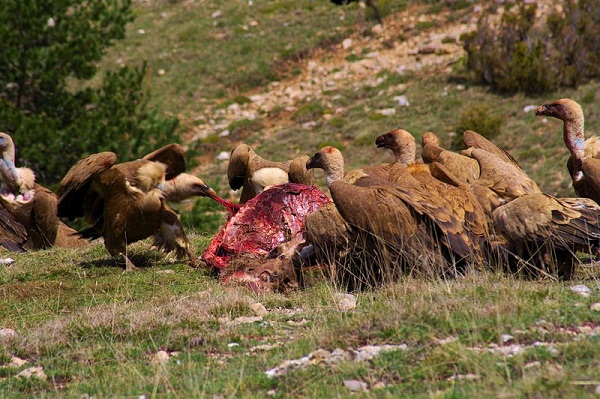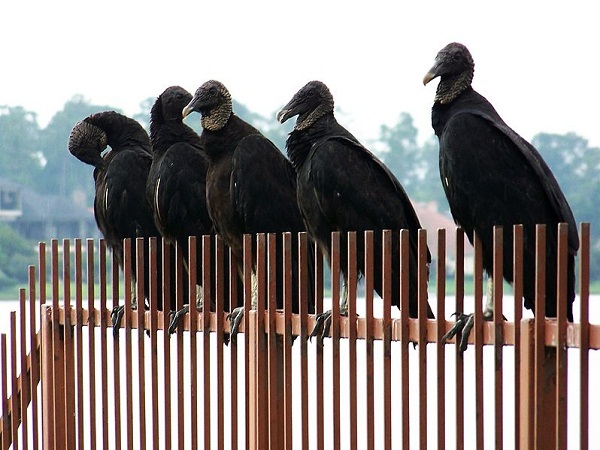Find a solution so that the vultures do not smell their own food.

However, John James Audubon (1785-1851) – the famous Franco-American naturalist did not think so.

Audubon was once in the woods and saw a vulture. It wasn’t until he got closer that the bird took off with a start when it should have sensed people from afar. Since then, scientists began to doubt the smell of this animal.
He decided to try an experiment. Audubon used deer hide around the hay, then decorated the head, eyes and parts to imitate a deer in the meadow.
Surprisingly, a vulture appeared and pecked “the body of the deer”. If the vulture could smell it, he wouldn’t have been fooled so easily.The vultures appeared and pecked “the body of the deer”.
Audubon tried another experiment. He took the body of a rotting pig and spread it out in the grass, but covered it on the branches.
Even though this area was filled with flying vultures, no one had discovered this hearty meal. Audubon then surmised that the vulture’s smell was exaggerated by humans compared to reality. According to him, vultures use their sharp eyes rather than their noses to find food.

In 1826, Audubon gave a lecture on his discovery in London. However, he was firmly opposed.
Charles Waterton, the British naturalist, also pointed out that Audubon’s argument is foolish and deserves to be condemned. Yet Audubon remained steadfast.
Experts in the field of ornithology decided to meet in Charleston, South Carolina (USA) – where many vultures live.
They tried an experiment like this. An artist is hired to paint a picture of the corpse of an injured sheep – a perfect meal for vultures. The painting was taken to the meadow.
At the same time, people prepare a pile of smelly meat and hide it under a small wooden board so that the vultures can access the food.
The air can enter the wood and spread the smell of rancid flesh all around. They placed this hidden pile only about 5 yards from the fake meal painting.
The experiment began, and to everyone’s surprise, the descending vultures searched the image of the dead sheep.
Naturalist Jon Bachman, who designed the experiment, noticed that although the stinking stench was nearby, no vultures were eager to approach.

Audubon therefore won the debate with scientists. Through practical experiments, the popular belief that vultures use their noses to find food has been refuted.
Instead, vision is the primary tool that helps the animal detect its prey. It can be seen that without experimental science, our understanding of nature and all things in general will be full of errors.
However, it should be noted that the above experience is only true for black vultures. Scientists later discovered that a number of other vultures such as the Cathar aura vultures can use their sense of smell to find food.
Interestingly, in the 1930s, petroleum engineers in Texas (USA) used the delicate smell of this species to detect cracks in oil pipes.
They pump an aromatic chemical down the oil line and if there is an opening, the Cathar aura vultures will fly, letting the engineers know where the problem is.


